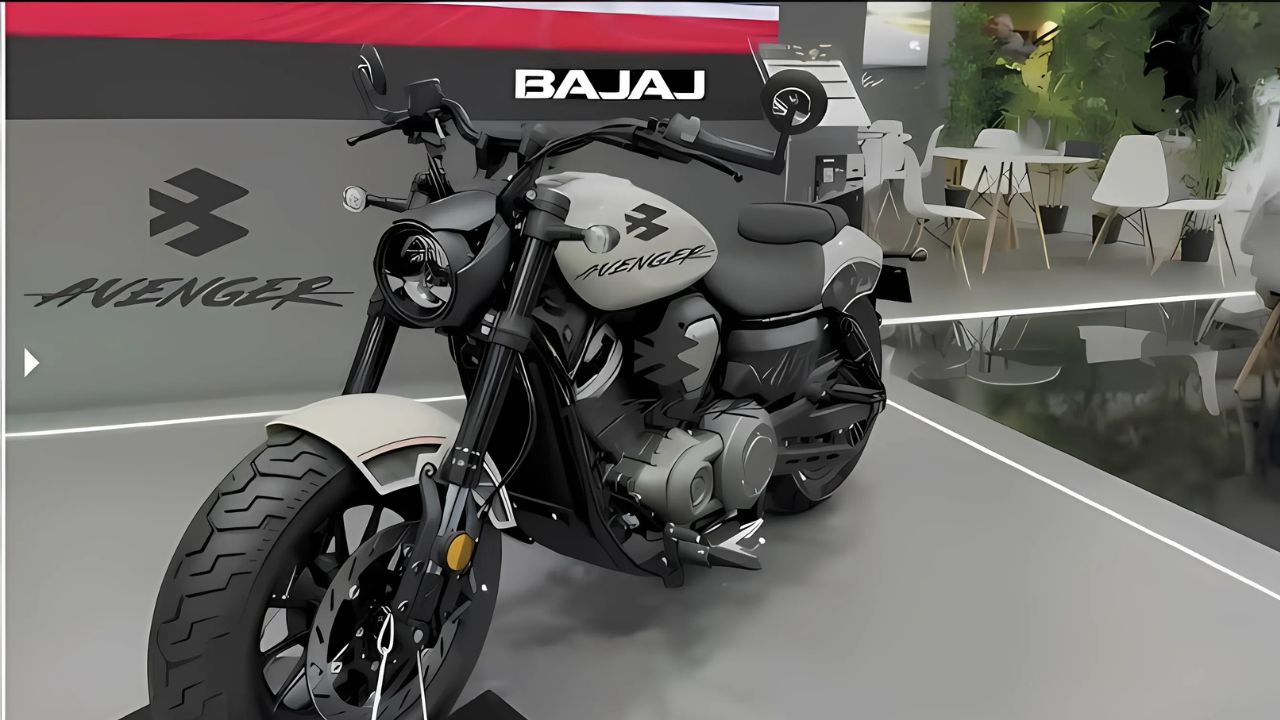In a bold move that’s set to shake up the Indian motorcycle market, Bajaj Auto is gearing up to launch its most ambitious cruiser yet – the Bajaj Avenger 400. This latest addition to the beloved Avenger lineup promises to redefine the cruiser segment with its potent blend of power, style, and affordability. Let’s dive into the details of this eagerly anticipated machine.
A Legacy Reimagined
The Avenger series has long been a favorite among Indian riders, offering a taste of the cruiser lifestyle at an accessible price point. With the Avenger 400, Bajaj is taking this concept to new heights, targeting riders who crave more power and presence on the open road.
Heart of the Beast
At the core of the Avenger 400 lies a robust 373.3cc, single-cylinder, liquid-cooled engine. This powerplant, derived from the successful Dominar 400, is expected to churn out around 40 PS of power and 35 Nm of torque. The engine will be mated to a 6-speed gearbox, promising smooth shifts and relaxed cruising at highway speeds.
Bajaj’s engineers have reportedly fine-tuned the engine mapping to suit the cruiser character, emphasizing low-end torque and a meaty mid-range. This should translate to effortless acceleration and a satisfying surge of power when overtaking.
Striking the Right Pose
Visually, the Avenger 400 stays true to its cruiser roots while adopting a more muscular stance. Expect a low-slung profile, wide handlebars, and forward-set footpegs for that quintessential laid-back riding position. Spy shots suggest a larger fuel tank, possibly in the 15-liter range, enhancing the bike’s touring capabilities.
The front end is likely to feature a chunky telescopic fork, while the rear will sport twin shock absorbers. A new, wider seat promises improved comfort for both rider and pillion on long hauls.
Tech-Savvy Cruising
Bajaj isn’t skimping on the technology front. The Avenger 400 is expected to boast a full-LED lighting setup, including a distinctive DRL signature. A new, fully-digital instrument cluster will provide all essential information at a glance, with the possibility of Bluetooth connectivity for smartphone integration.
Safety features will include dual-channel ABS as standard, working in tandem with front and rear disc brakes. Tubeless tires on alloy wheels will further enhance the bike’s touring credentials.
Performance, Handling and Mileage
While cruisers aren’t typically associated with sporty handling, Bajaj aims to break the mold with the Avenger 400. The stiffer chassis and improved suspension setup should result in more confident cornering without compromising on ride comfort.
The increased power output will undoubtedly make highway cruising a breeze, with early estimates suggesting a top speed in the region of 160-170 km/h. However, it’s the relaxed, mile-munching ability that Bajaj is focusing on, rather than outright performance figures.
The Bajaj Avenger 400, an upcoming cruiser motorcycle, is expected to deliver a mileage of 24-28 kmpl (kilometers per liter) approximately. This figure is based on speculations and comparisons with similar models in its class.
Competitive Landscape
The Avenger 400 enters a segment currently dominated by Royal Enfield, particularly with models like the Classic 350 and the Meteor 350. Bajaj’s offering is expected to outgun these in terms of outright performance while potentially undercutting them on price.
Other competitors in the mix include the Jawa Perak and the Honda H’ness CB350. The Avenger 400’s unique selling proposition will be its combination of high displacement, modern features, and the trusted Bajaj brand name.
Pricing Strategy
One of the most crucial factors in the Avenger 400’s success will be its pricing. Industry insiders suggest a price tag in the range of ₹1.8 to 2 lakh (ex-showroom). This would position it as a value proposition against its rivals, offering more displacement and power at a competitive price point.
Launch Timeline and Availability
While Bajaj has kept its cards close to its chest, sources indicate a possible launch in the latter half of 2024. Initial availability is expected to be through Bajaj’s premium KTM dealerships, with a gradual rollout to other outlets across the country.
The Bigger Picture
The introduction of the Avenger 400 is part of Bajaj’s broader strategy to strengthen its position in the premium motorcycle segment. This move aligns with the growing trend of Indian consumers upgrading to higher displacement bikes for both commuting and leisure riding.
Moreover, the Avenger 400 could serve as a platform for Bajaj to explore international markets, particularly in Southeast Asia and Latin America, where there’s a growing appetite for affordable, mid-capacity cruisers.
Environmental Considerations
In line with increasingly stringent emission norms, the Avenger 400 will comply with BS6 Phase 2 regulations. Bajaj might also introduce ride-by-wire technology, allowing for multiple riding modes that could optimize performance and fuel efficiency.
Customization Options
Recognizing the cruiser crowd’s penchant for personalization, Bajaj is likely to offer a range of official accessories at launch. These could include windscreens, saddlebags, and various cosmetic enhancements, allowing riders to tailor their Avenger 400 to their tastes.
Conclusion: A Game-Changer in the Making?
The Bajaj Avenger 400 represents a significant leap for the Indian motorcycle giant. By combining the beloved Avenger DNA with a potent 400cc heart, Bajaj is poised to attract a wide range of riders – from urban commuters looking for a comfortable daily ride to touring enthusiasts seeking an affordable entry into the world of highway cruising.
As the launch date approaches, anticipation continues to build. Will the Avenger 400 live up to the hype and carve out a significant niche in the competitive Indian motorcycle market? Only time will tell, but one thing’s for certain – the cruiser segment is in for a shake-up, and Bajaj is leading the charge.
Stay tuned for more updates as we inch closer to the official unveiling of the Bajaj Avenger 400 – a machine that promises to bring the thrill of high-displacement cruising to the masses.
